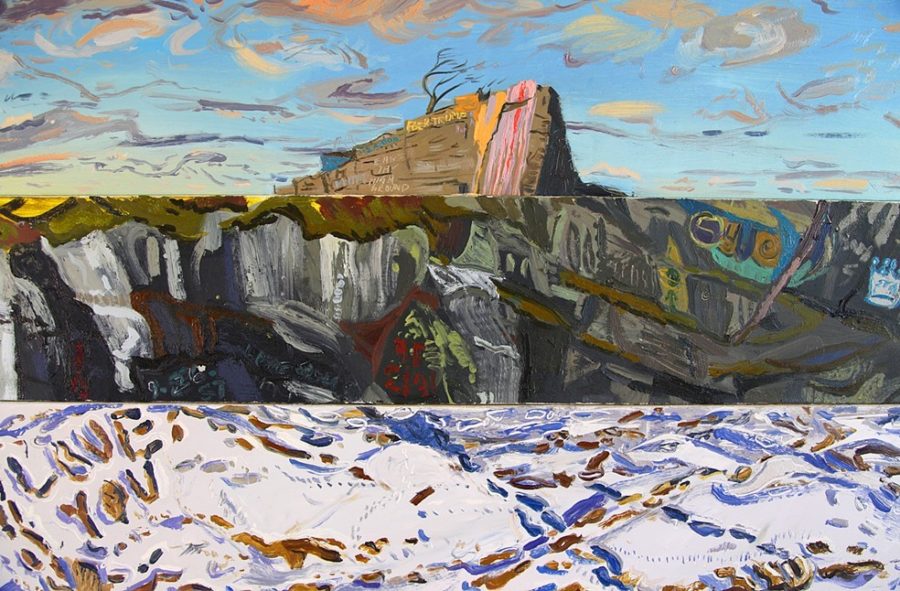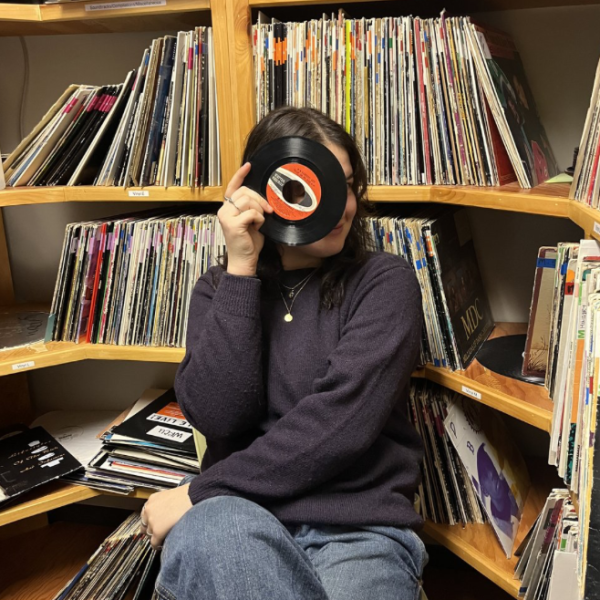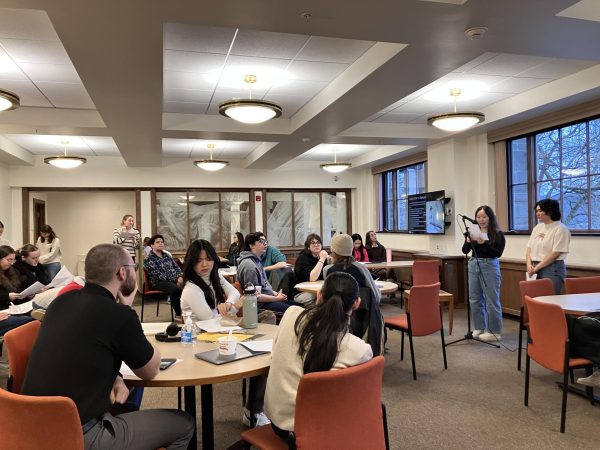Visiting Lecturer Elizabeth Flood Speaks on Witnessing the American Landscape
Professional artist and visiting lecturer Elizabeth Flood shared her painting experience and artistic practice with the LifeLong Learning Program on April 6. The program is a partnership between Colgate University and local Hamilton residents to provide adults with ongoing education courses from a wide diversity of subjects, often led by Colgate professors. Fifteen participants attended Tuesday’s event.
Everett Eggington, a Colgate class of 1965 alumnus, introduced Flood and gave a brief background on her expertise.
“[Flood] invites the viewers to be present in the landscape she paints emotionally, if not physically as well,” Eggington said.
Flood’s work was originally inspired by the constantly changing environment she grew up in, a small town in northern Virginia. Its transience lured her to view nature from different perspectives, and even understand the history of the land she paints. The cross-section between history and geology is rarely noted, yet Flood aims to convey the importance of visible layers of history that can be extracted and portrayed through painting. Her lecture focused on her current interests and concerns, as well as an in-depth discussion of her past and ongoing works from different locations, ranging from Gettysburg, V.A., to Death Valley, N. M., to a granite quarry south of Boston.
“I wanted to embody being mentally still in a location. Moving through the sites is equally important as the painting itself,” Flood said as she explained her complex set-ups on top of mountains or even within deserts. She captures the sensations of weather, no matter the conditions.
Flood explained her recent project which is based in the midst of a granite quarry turned into a graffiti haven, Quincy Quarries. She hiked to the tops of 150-foot granite cliffs to view her surroundings and absorb the complexity of her subject area. The paintings were often wide, horizontal canvases bound together, with each panel depicting a different viewpoint of the same location. Using the tactility of oil paint, Flood effectively evokes emotion from the viewer in attempts to elaborate upon an otherwise unknown area.
In addition to discussing her own work and processes, Flood also shared photos from artists who explored complex landscapes. She noted JMW Turner’s monumental, turbulent paintings from the height of the industrial revolution, as well as Rackstraw Down’s excellent communication of environmental concerns through his paintings, which extract energy from muted ambient tones. Other inspirations she noted included Julie Mehretv, Rodney McMillian, Josephine Halverson, Michael Heizer and Georgia O’Keeffe.
When reflecting on inspirations, Flood said, “in painting, you get to pick your family; though I do not talk to all of [these artists], I think our work speaks to each other.”
Flood’s sense of urgency to translate forgotten history into her evanescent paintings effectively captures her passion for history, geography and art. She intertwines personal perception with multiple views of the same reality, allowing her work to unfold at different speeds for the viewer. Her monumentally large paintings speak to the extensive visual information being presented.
After finishing her time as a visiting lecturer at Colgate this year, she plans to return to Chancellorsville, Va., to continue telling historical narratives through her awe inspiring artwork.











